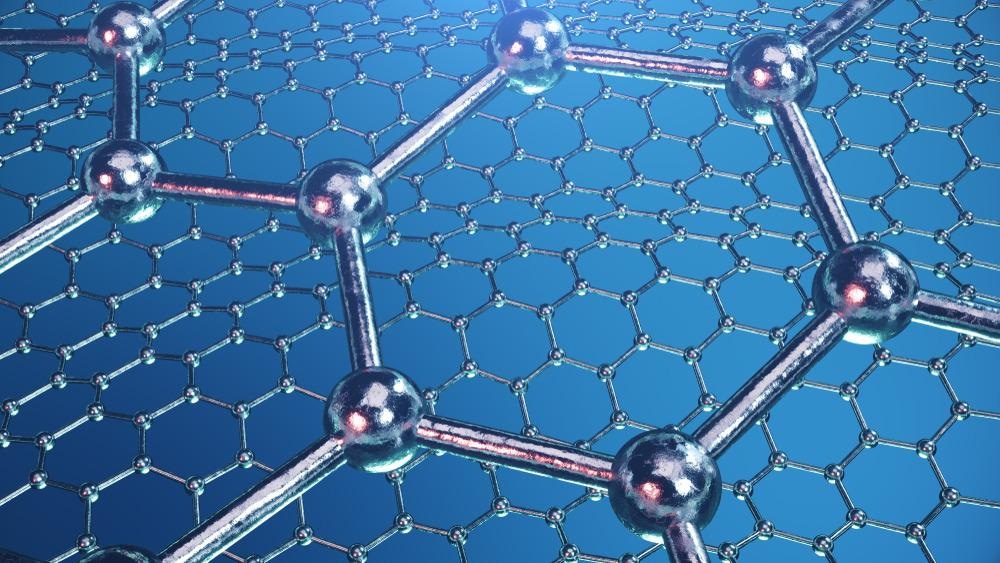In a study published recently in the Journal of Alloys and Compounds, crystalline graphene quantum dots (GQDs) were compiled utilizing agro-waste of crop residues through a hydrothermal route.

Study: Unraveling the role of agro waste-derived graphene quantum dots on dielectric and mechanical property of the fly ash based polymer nanocomposite. Image Credit: Rost9/Shutterstock.com
Importance of Paddy Straw
The rising demand for housing and food due to urbanization has amplified agricultural and manufacturing practices, resulting in massive organic and synthetic refuse production.
Paddy straw is a significant component of numerous agricultural wastes, and approximately 150 million tons of paddy straw are generated each year globally.
Likewise, as the requirement for energy grows, massive natural resources in the shape of coal goods are needed for thermal power stations, which subsequently generate fly ash as garbage in the amount of 250 MT per year.
Farming and industrial by-products, such as paddy straw and fly ash wastages, are becoming increasingly problematic, and their effective application is desperately required around the globe.
To decompose the paddy straw refuse, it is typically burned in an open area, leading to serious environmental pollution and multiple impacts on human health.
Correspondingly, a considerable portion of fly ash silica dust, aluminium oxide, and ferric oxide are discarded in the open field, contaminating groundwater due to the evaporation of toxic materials from wood ash.
Problems Faced Previously
To tackle these issues, several scientists recently revealed that fly ash could be utilized as reinforcing agents in concretes, slabs, and structural components.
But even so, the fly ash composite's prospective scope is limited fracture toughness, inertness, and dissipation factor constant.
Furthermore, tweaking the mechanical systems characteristics of fly ash-based reinforced composites is both difficult and beneficial for their diverse fields, which include clever construction materials, charge storage, aviation components, flame-resistant, gyroscope, electronic parts, and self-healing components.
A few nanomaterials, including nanomaterials, nanowires, and silicon dioxide nanocomposites, were used to enhance the behavior of the material.
Nevertheless, developing these nanoparticles is a complicated task, and their distribution in the polymer matrices is extremely difficult.
Graphene nanomaterials have attracted possible interest due to their inherent and exceptional physiological, biological, and electrical properties, such as good mechanical rigidity.
Crystalline graphene quantum dots, zero-dimensional substances, in specific, acquire fascinating characteristics as well as remarkable properties like quasi absorption edge, particle consequences, and corner impacts.
On the other hand, crystalline graphene quantum dots have still to be used to modify the insulating and tensile strengths of a fly ash-polymer nanostructure. Furthermore, little is known about developing crystalline graphene quantum dots from waste products.
New Methodology
In this study, crystalline graphene quantum dots from biomasses were created, and their implementation in stone waste was explored.
Fly ash nanomaterials have many applications in areas, including charge storage systems, strain hardening requests, and strain sensors. For the first time, the impact of crystalline graphene quantum dots on the electrical constants and mechanical characteristics (flexural strength) of fly ash nanomaterials was explored.
Through surface treatment of polydisperse crystalline graphene quantum dots in bottom ash fine particles using shear molding methods, the electrical conductivity and tensile strengths of fly ash composite material nanostructures were considerably enhanced.
Results
To summarise, for the first time, a paddy straw-derived crystalline graphene quantum dots bolstered fly ash polymer nanostructures was created utilizing shear molding methodologies.
The establishment of crystalline graphene quantum dots from paddy straw was affirmed by X-ray diffraction technique and an HR-TEM image.
The reassurance of crystalline graphene quantum dots significantly increased the modulus of elasticity of the crystalline graphene quantum dots-fly ash polymer nanostructures.
The crystalline graphene quantum dots bolstered fly ash nanomaterials demonstrated a significantly higher tensile strength of 60 MPa, whereas the pristine fly ash matrix demonstrated a low modulus of elasticity of 35 MPa.
The discovery suggested a novel and environmentally sustainable strategy to convert physical and chemical pollutants into real worth components like crystalline graphene quantum dots -fly ash polymer nanosheets.
Continue reading: Synthesizing ZnO Nanocomposites Using Pomegranates
Reference
Chaturvedi, A. K., Pappu, A., & Gupta, M. K. (2022). Unraveling the role of agro waste-derived graphene quantum dots on dielectric and mechanical property of the fly ash based polymer nanocomposite. Journal of Alloys and Compounds. Available at: https://www.sciencedirect.com/science/article/pii/S0925838822003449?via%3Dihub
Disclaimer: The views expressed here are those of the author expressed in their private capacity and do not necessarily represent the views of AZoM.com Limited T/A AZoNetwork the owner and operator of this website. This disclaimer forms part of the Terms and conditions of use of this website.